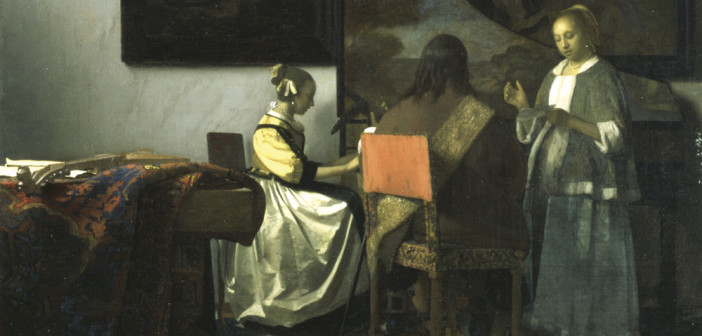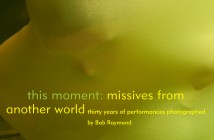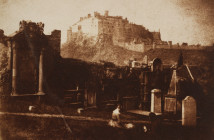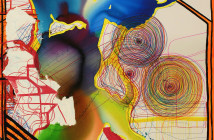The Visual Culture Consortium (VCC) is an association of New England scholars, university-level educators, and professionals in the fields of art history, studio art, and visual culture. The VCC is best known for its annual Boston Area Undergraduate Art History Symposium, along with community events, such as lectures, museum tours, gallery visits, and a career fair. For its fifth annual convening, April 13th, eight panelists, chosen from a pool of no less than sixty applicants from throughout the New England region, were assembled to present their research on topics relating to art history and visual culture.
The Symposium was first organized by Cynthia Fowler at Emmanuel College in 2009. In subsequent years, it has expanded from the local Boston area to include colleges and universities throughout the New England region. Additionally, the venue changed from the Art Institute of Boston to the MFA—a move that Stuart Steck, the VCC’s President and Founder, credits for increasing the Symposium’s visibility and prestige. According to Stuart, the mission of the Symposium is to "provide undergraduate students with an opportunity to present their research in a professional setting." Every fall semester, a call for proposals is sent to undergraduates in Art History departments throughout New England, encouraging students to submit an abstract of a paper previously written, or in the process of being written. Many students propose papers written for a specific class, for their graduating thesis, or for preexisting research grant. Julia Kirchmer, who presented her research on Public Art and Ai Weiwei this year, described her presentation as only small portion of her thesis paper, which she began last fall to complete her degree. Submissions are accepted until February, after which the final panelists and papers are chosen by a selection committee composed of art history professors at various colleges and universities, through ‘blind selection,’ where the identity and institution affiliation of the student is unknown. The ‘blind selection’ process is to ensure that proposals of the highest quality are chosen and that the results are fair and equal.
The first panel, titled "Locating Relationships," used the universalizing theme of the interplay of art and place to correlate four very different speakers. Annika Blake-Howland, from Simmons College, was the first to present, and spoke about Isabella Stewart Gardner’s 1892 acquisition of Johannes Vermeer’s painting The Concert—one of the thirteen works stolen from the Gardner in the museum heist of 1990. Annika argued that Gardner's interest in paintings by the Old Masters helped cement Vermeer’s renown here and abroad.
Sujin Shin, a student at Brandeis, also spoke about a celebrated Continental artist. Her essay, "A Mutual Evolution: Edvard Munch and Modern Norway," looks at Munch’s later years and defines his late style in terms of an attempt to formulate a Norwegian aesthetic. Ironically, Munch’s need to be recognized by his compatriots resulted in some of his most innovative paintings. Of note is The Sun (1909).
The next speaker was Maine native Gregory Letellier, for whom the spooky folklore of his home state figures in Winslow Homer’s 1894 painting, Moonlight, Wood Island Light. Gregory enlivened a formalist interpretation of Homer’s work with tales of lighthouses, ghosts, and murder.
Michael Rose concluded the first panel with the proposition that to interpret Francesca Woodman’s photographs in relation to her suicide is limiting. More than lugubrious omens of suicide, Woodman’s self-portraits are an exercise in redefining how women relate to the domestic space, Michael argued. His optimistic interpretation constitutes a dynamic alternative for how to think about Woodman’s work.
Speculating on the first known double portrait, Madeline Oliver, who studies Art History at Yale, proposed several interpretations of Fra Filippo Lippi’s Portrait of a Woman with a Man at a Casement. Determining the question of the marital status of the depicted couple was considered instrumental to comprehending this painting, which juxtaposes internal, domestic space with external landscape.
Ryohei Takatsuchi’s aptly titled essay, "The Casting of Meaning: Issues in the Historiography of Ritual Bronze Vessels from Early China," dealt with issues like creating criteria for judging objects that were not made to be contemplated as art. The lack of historical documentation on the intrinsic usefulness of ritual bronze vessels to early Chinese society limits our ability to formulate categories by which to assess them.
The increasingly blurry line distinguishing private from public experience that can be attributed to the development of networked spaces figured in Margaret Jensen’s discussion of Penelope Umbrico’s appropriative art. Umbrico’s grouping of images of sunsets taken from the web, an affront on the so-called "linear gaze," exemplifies the disruption of conventional ways of viewing in internet-based art.
When the definition of an artist as the sole producer of a work does not hold, as is the case for Ai Weiwei, whose recent production has depended on community collaboration, Julia Kirchmer proposes revisiting Susan Lacy’s book, New Genre Public Art. Ai Weiwei’s dual role as artist and activist can be mapped onto Lacy’s ideas about how acts of activism and public art interrelate. Julia argues for considering Ai Weiwei’s projects —pointed social and political criticisms that engage a multitude of participants—with Lacy’s conceptual framework in mind.
One of the observations we made during the Symposium was that many student-presenters were neither majoring in Art History, nor intended on pursuing a career in the field of visual arts after graduation. Michael Rose, who will soon graduate from Providence College, mentioned that he hopes to start a career in Marketing. Madeline Oliver, a senior at Yale University, plans to teach mathematics at the Lower School level. What's more, the presented papers were not recorded, nor is there a plan to group them into a publication following the Symposium. Both these issues seem problematic for an organization like the VCC, whose priority is to foster a community of students and to "engage various audiences in dialogues relating to both art history and visual culture." We felt that there lacked the prospects of extending research and discourse of these topics. When asked about this, Stuart Steck stated that, generally speaking, the VCC supports any student who takes an interest in art history and visual culture and that the VCC has discussed the possibility of taping or publishing this year’s and future symposiums’ papers.
Ultimately, the VCC Symposium—one of the few of its kind—was successful, engaging for the audience, and encouraging in its diverse array of students and research topics. The presentations and research were of an extremely high caliber, well articulated and thought-provoking. For the students, the opportunity of presenting their research was rare and an achievement worth working for, as Julia Kirchmer remarked: "Having the experience of formally presenting research, as an undergraduate, is irreplaceable. Preparing for the Symposium was a huge amount of work, but it was definitely the best way for me to feel that I had rounded out my education."




